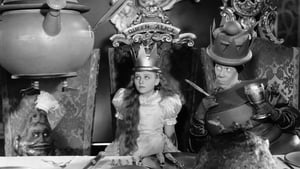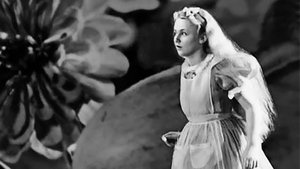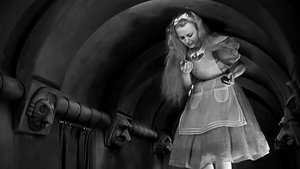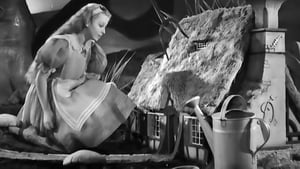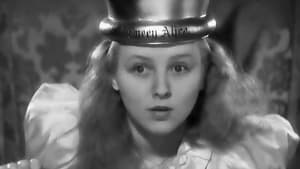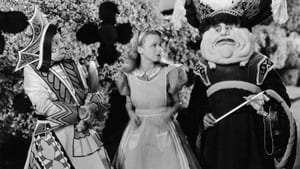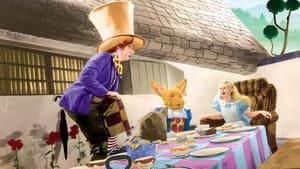Contact: [email protected]
Video Sources 0 Views
- Watch trailer
- Alice in Wonderland

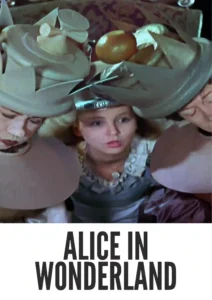
Synopsis
Table of Contents
ToggleReview: Alice in Wonderland (1933) – A Whimsical Journey Through Lewis Carroll’s Wonderland

Introduction
“Alice in Wonderland” (1933) presents a whimsical interpretation of Lewis Carroll’s beloved tale, inviting audiences to immerse themselves in a fantastical world where logic takes a backseat to imagination. In this review, we’ll explore the enduring charm of this early adaptation and its significance in the realm of fantasy cinema.
Check The Full Colorized Movies List
Check Our Colorized Movies Trailer Channel
Understanding Alice in Wonderland 1933: Director, Cast, and Genre
Directed by Norman Z. McLeod, “Alice in Wonderland” (1933) captures the essence of Carroll’s timeless story, bringing its iconic characters to life with a blend of live-action and animation. The film features an ensemble cast, including Charlotte Henry as the titular Alice, whose wide-eyed wonder and innocence serve as the perfect foil to the eccentric inhabitants of Wonderland. With its seamless integration of music, dance, and visual effects, “Alice in Wonderland” (1933) blurs the lines between fantasy and reality, captivating audiences with its whimsical charm.
Exploring the World of Alice in Wonderland 1933: Plot and Characters
At its core, “Alice in Wonderland” (1933) follows the adventures of a young girl who falls down a rabbit hole and finds herself in a bizarre world populated by talking animals, eccentric royalty, and enigmatic creatures. As Alice navigates the surreal landscapes of Wonderland, she encounters a colorful cast of characters, from the enigmatic Cheshire Cat to the tyrannical Queen of Hearts, each more eccentric than the last. Through her interactions with these fantastical beings, Alice embarks on a journey of self-discovery and enlightenment, learning valuable lessons about courage, curiosity, and the power of imagination.
The Art of Film Colorization
While “Alice in Wonderland” (1933) was originally filmed in black and white, its whimsical visuals and vibrant characters lend themselves well to the colorization process. By adding color to the film’s iconic scenes and characters, colorization breathes new life into Carroll’s fantastical world, allowing audiences to experience Wonderland in all its colorful glory. While purists may argue that colorization detracts from the film’s original aesthetic, others see it as an opportunity to introduce “Alice in Wonderland” (1933) to a new generation of viewers and showcase its enduring appeal in a modern context.
Early Colored Films: A Brief History
The history of colored films dates back to the early days of cinema, with filmmakers experimenting with various techniques to add color to their creations. From hand-tinted frames to early Technicolor processes, the evolution of colored film has been marked by innovation and creativity, paving the way for the development of modern colorization techniques that continue to captivate audiences to this day.
Alice in Wonderland 1933 and Its Early Colored Version
The decision to release a colorized version of “Alice in Wonderland” (1933) was met with both excitement and apprehension. While some welcomed the opportunity to experience the film in vibrant color, others expressed concerns about the potential impact on its visual aesthetic. Nevertheless, the early colored version of “Alice in Wonderland” (1933) offers viewers a fresh perspective on Carroll’s timeless tale, enhancing its whimsical charm and immersing audiences in the magical world of Wonderland like never before.
The Debate Over Film Colorization
The debate over film colorization continues to divide audiences and critics alike, with proponents praising its ability to breathe new life into classic movies and introduce them to a new generation of viewers, while detractors argue that it compromises the artistic integrity of the original work and diminishes its historical significance. As the debate rages on, filmmakers and audiences alike are left to ponder the merits and drawbacks of colorization in the ever-evolving landscape of cinema.
Examining Alice in Wonderland 1933 as an Early Colored Film
As with any colorized classic, the impact of colorization on “Alice in Wonderland” (1933) is a matter of personal interpretation. Some may argue that it enhances the film’s visual appeal and immerses viewers in its world, while others may feel that it detracts from the whimsical charm of the original black and white version. Regardless of one’s stance on the issue, there’s no denying the enduring power of “Alice in Wonderland” (1933) as a timeless fantasy adventure that continues to captivate audiences of all ages.
Influence and Legacy: Alice in Wonderland 1933’s Impact on Cinema
“Alice in Wonderland” (1933) has left an indelible mark on the world of cinema, inspiring countless filmmakers and captivating audiences with its timeless tale of imagination and wonder. From its unforgettable characters to its enchanting visuals, the film continues to resonate with viewers of all ages, reaffirming its status as a beloved classic of the fantasy genre.
Director’s Cinematic Legacy: Beyond Alice in Wonderland 1933
Norman Z. McLeod’s influence extends far beyond “Alice in Wonderland” (1933), with a diverse body of work that spans multiple genres and styles. From comedies to musicals, McLeod’s films are celebrated for their wit, charm, and inventive storytelling, solidifying his legacy as one of the preeminent directors of Hollywood’s Golden Age. Through his groundbreaking work, McLeod has left an indelible imprint on the world of cinema, inspiring generations of filmmakers to follow in his footsteps.
Themes Explored in Alice in Wonderland 1933
“Alice in Wonderland” (1933) explores a myriad of themes, from the power of imagination to the quest for self-discovery and enlightenment. Through its richly drawn characters and fantastical landscapes, the film invites viewers to embrace their inner child and embark on a journey of wonder and whimsy. As audiences immerse themselves in the magical world of Wonderland, they are reminded of the importance of curiosity, courage, and the boundless possibilities of the human imagination.
Reception and Controversy Surrounding Alice in Wonderland 1933
Upon its release, “Alice in Wonderland” (1933) received widespread critical acclaim, with many praising its inventive visuals, imaginative storytelling, and memorable characters. However, the decision to release the film in a colorized format sparked debate among purists, reigniting the age-old discussion surrounding film preservation and artistic integrity. Despite the controversy, “Alice in Wonderland” (1933) remains a beloved classic that continues to enchant audiences with its timeless tale of wonder and whimsy.
Where to Watch Alice in Wonderland 1933 Online
For those eager to experience the enchantment of “Alice in Wonderland” (1933), the film is readily available on popular streaming platforms such as Netflix, Amazon Prime, and Hulu. Whether you choose to watch it in its original black and white format or the early colored version, “Alice in Wonderland” (1933) promises to transport you to a world of fantasy and adventure, where anything is possible and the only limit is your imagination.
FAQs About Alice in Wonderland 1933
Q: Is “Alice in Wonderland” (1933) based on the book by Lewis Carroll? A: Yes, “Alice in Wonderland” (1933) is an adaptation of Lewis Carroll’s beloved novel of the same name, which follows the adventures of a young girl named Alice as she journeys through a fantastical world filled with peculiar creatures and nonsensical adventures.
Q: Who are the main actors in “Alice in Wonderland” (1933)? A: “Alice in Wonderland” (1933) features an ensemble cast, including Charlotte Henry as Alice, who embarks on a whimsical journey through Wonderland, encountering a colorful cast of characters along the way.
Q: What awards did “Alice in Wonderland” (1933) win? A: While “Alice in Wonderland” (1933) did not win any major awards, it remains a beloved classic of the fantasy genre, cherished by audiences for its imaginative storytelling and timeless charm.
Q: Why was “Alice in Wonderland” (1933) released in a colorized format? A: The decision to release “Alice in Wonderland” (1933) in color was made to introduce the film to a new generation of viewers and enhance its visual appeal for modern audiences. While the choice to colorize the film sparked debate among purists, it ultimately allowed “Alice in Wonderland” (1933) to reach a wider audience and ensure its continued relevance in the annals of cinematic history.
Conclusion
As we journey through the whimsical landscapes of Wonderland and the hearts of its eccentric characters, let us remember the enduring magic of “Alice in Wonderland” (1933) and the timeless lessons it imparts. In a world filled with uncertainty and chaos, the film serves as a beacon of hope and a reminder of the transformative power of imagination. So, whether you’re young or young at heart, take a moment to revisit “Alice in Wonderland” (1933) and experience the enchantment of Carroll’s timeless tale for yourself. For in the fantastical world of Wonderland, anything is possible, and the only limit is your imagination.
